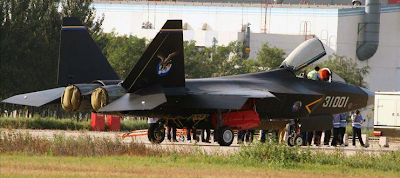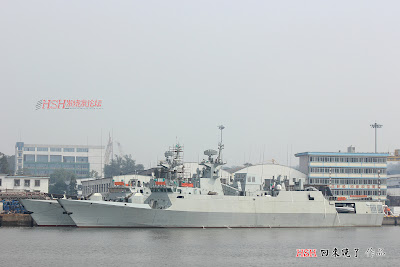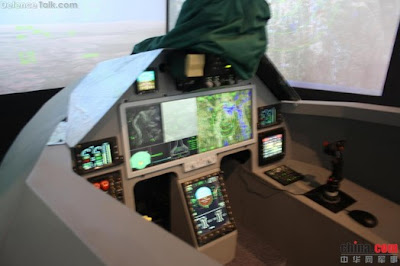Oct 29, 2012
Chinese Investment In Europe On Rapid Rise
China's investment deals in Europe first surpassed Europe's in China in the first quarter of 2012, with 32 investments from China's mainland and just 26 deals made by European companies in China, according to a PwC report released on Thursday.
The report, "China Deals; A fresh perspective," from PwC's emerging markets group, showed there has been a steady rise in the value and volume of mainland Chinese investments in Europe over the last six years despite recent signs of a slowdown in China's economic growth and the continuing uncertainties of the eurozone crisis.
Chinese investments in Europe increased from just 11 deals in 2006 to 61 in 2011, while those from Europe to China declined from a peak of 163 deals in 2006 to a low of 85 in 2009, narrowing down the gap between the two sides.
Meanwhile, Europe's investment to China has recovered since 2009 as European investors pushed for growth through deals in China's faster growing market. In 2011, European investors completed 125 deals in China.
Chinese state-owned enterprises have led the way in investing in Europe, as noted by the report, and its privately owned businesses are now also looking to expand by acquiring companies overseas and in a range of sectors.
China's R&D Spending Hits Record High
China's expenditure on scientific research and development reached a record high level in 2011, according to official data released Thursday.
China's expenditure on R&D totaled 868.7 billion yuan ($139.2 billion) in 2011, up 23 percent year-on-year, according to a joint report published by the National Bureau of Statistics, the Ministry of Science and Technology and the Ministry of Finance.
R&D expenditure was the highest in terms of the total amount and also its share in GDP, it said.
R&D funds accounted for 1.84 percent of the country's annual gross domestic output (GDP) in 2011, a higher proportion than the 1.76 percent registered in 2010, said the report.
Companies and enterprises invested the most on R&D, with 657.93 billion yuan recorded in 2011, up 26.9 percent year-on-year. Government-affiliated research institutes and universities spent 130.67 billion yuan and 68.89 billion yuan, up 10.1 percent and 15.3 percent from a year earlier, respectively.
Eight provincial regions, including the capital city Beijing and eastern China's Shanghai Municipality invested more than 30 billion yuan on scientific R&D last year.
Fiscal spending on science and technological development rose 19.2 percent to reach 490.26 billion yuan, or 4.49 percent of the state's total fiscal expenditure.
Oct 27, 2012
China Unicom Replaces Cisco Devices In China Over Security Concerns
 |
| China Unicom |
China Unicom has replaced devices of Cisco Systems, Inc. in one of the country’s most important backbone networks, citing security reasons, the 21st Century Business Herald reported.
The replacement project targets “China169” backbone network’s Cisco router in Wuxi, Jiangsu. Analysts indicated that the product vulnerability and back door problems are the main worries of China Unicom.
The move came after a congressional report branded Huawei Technologies Co. Ltd and ZTE Corp security threats in the United States. China domestic operators began to intensify network security since then, the report said.
As the world’s largest maker of networking equipment, Cisco takes high market share in China. It accounts over 70 percent share of China telecom’s 163 backbone network and over 80 percent share of China Unicom’s 169 backbone network.
163 and 169 backbone networks are the most important backbone networks of China, delivering over 80 percent data of the country’s Internet.
Pakistan Air Force Starts Exercise Saffron Bandit 2012-13
 |
| PAF Saffron Bandit 2012-13 |
Chief of Air Staff of Pakistan Air Force, Air Chief Marshal Tahir Rafique Butt on Thursday said that readiness and war preparedness have attained enhanced significance in today’s dynamic and rapidly changing environment.
Speaking as a chief guest on the inaugural ceremony of Exercise Saffron Bandit 2012-13 held at an Operational Base of Pakistan Air Force, he said that PAF is, indeed, the most potent element of state defence and as always, has to maintain its posture to thwart any threats to our motherland.
“As all of you are aware, that while the traditional threats have not disappeared, new challenges with much uglier faces have surfaced. Therefore, besides evolving new and consolidating the established employment concepts, we have to keep this non-traditional adversary in our sights as well”, he added.
While advising the members of participating units at the ceremony, the Air Chief said the Exercise is aimed to enhance the war preparedness of PAF combat elements by providing role oriented training in near realistic but controlled environment.
The environment will be created by integrating and synergizing all available and futuristic capabilities and weapon systems for practicing, evolving and validating current and modern tactical concepts in a near war like environment.
“This time the environment is unique as all of the PAF's latest assets would be made to operate under one umbrella. Hence, through this Exercise, the PAF would be stepping into the future with all its modern capabilities in action”, he concluded.
New Stuxnet Like Malware Detected:Global Cyber Warfare
A new cyber espionage
program associated to the notorious Flame and Gauss malware has been detected
by Russia's Kaspersky Lab. The anti-virus giant’s chief warns that global cyber
warfare is in “full swing” and will probably accelerate in 2013.
The virus, named
miniFlame, and as well-known as SPE, has by now infected computers Systems in
Iran, Lebanon, France, the United States and Lithuania. It was exposed in July
2012 and is defined as “a small and highly flexible
malicious program designed to steal data and control infected systems during
targeted cyber espionage operations,” Kaspersky Lab said in a statement.
The malware was initially identified as an appendage of Flame – the program used for targeted cyber espionage in the Middle East and acknowledged to be part of mutual US-Israeli efforts to damage Iran’s nuclear program.
But later, Kaspersky Lab analysts learned that miniFlame is an “interoperable tool that could be used as an independent malicious program, or concurrently as a plug-in for both the Flame and Gauss malware.”
The analysis also exposed new evidence of cooperation between the creators of Flame and Gauss, as both viruses can use miniFlame for their operations.
Oct 23, 2012
Oct 20, 2012
Oct 17, 2012
Shenyang Unveils J-31 China's 2nd 5th Generation Stealth Fighter Jet
 |
| China's J-31 Stealth Fighter Jet |
China's Sheyang Aircraft Corporation(SAC) one of the leading aircraft
design and manufacturing corporations of China’s aviation industry and
a competitor of Chengdu Aircraft Corporation(CAC) Which is the maker
of china's first low observable or stealth Fighter J-20 Black Eagle
has Unveils its J-31 or J-21 Stealth Fighter Through leaking the
images of J-21 or J-31 on internet.
 |
| China's J-31 Stealth Fighter Jet |
The numerous images of the J-31 or J-21 show that the aircraft is very
different from the large, canard-delta J-20 Black Eagle. The Shenyang
fighter appears to be much smaller than the J-20, with about two-
thirds as much installed power. It is a quad-tail design with a
moderately swept clipped-delta wing and large canted vertical tails,
with a similar overall layout to the Lockheed Martin F-22—but more
like the F-35A Joint Strike Fighter in terms of overall size. Weapon
bays occupy the entire lower body aft of the inlets and ahead of the
engine bays. Flight controls are conventional, with separate rudders
and single-piece flaperons.
As in the case of the J-20 Black Eagle, most of the stealth-shaping
techniques are very similar to those on Lockheed Martin fighters, but
the engine nozzles are conventional. The nozzle shape on the prototype
is close to that of the Guizhou WS-13 or Klimov RD-93 engine which is
install on the Chengdu JF-17 fighter, minus the tapered “collar” that
fairs the latter's nozzle into the aft fuselage. Thrust vectoring has
been studied in China but has not yet been demonstrated in flight.
Oct 16, 2012
Oct 8, 2012
China's Aircraft Carrier Outdoes Russia's In Weapon Quality
US House Intelligence Report on Huawei & ZTE
Lawmakers are warning U.S. companies not to do business with two of the world's largest telecommunications equipment makers. The U.S. House of Representatives Intelligence Committee released a report Monday after an 11-month investigation about the business practices of Huawei Technologies and ZTE Corp, Chinese firms that develop and sell telecom communications equipment like routers, handsets and switches. The report recommends that Huawei and ZTE be excluded from expanding their businesses in the U.S. because of cyber espionage risk and connections to the Chinese government.
Committee members said neither Huawei nor ZTE provided ample documents or detailed information to "ameliorate the committee's concerns" about their formal relationships and interaction with Chinese authorities. The investigation determined that Huawei and ZTE present risks to critical U.S. infrastructure that "could undermine core U.S. national-security interests" and therefore the U.S. "should view with suspicion the continued penetration of the U.S. telecommunications market by Chinese telecommunications companies."
"China has the means, opportunity and motive to use telecommunications companies for malicious purposes, " the report said. "Industry giants like Huawei and ZTE provide a wealth of opportunities for Chinese intelligence agencies to insert malicious hardware or software implants into critical telecommunications components and systems. Even if the company's leadership refused such a request, Chinese intelligence services need only recruit working-level technicians or managers in these companies. Further, it appears that under Chinese law, ZTE and Huawei would be obligated to cooperate with any request by the Chinese government to use their systems or access them for malicious purposes under the guise of state security."
Subscribe to:
Comments (Atom)
-
Pakistan has witnessed new defense acquisitions in this decade than any other, and in the center of it all is the new fighter which ...
-
China's Stealth Helicopter It's a stealth heavy attack helicopter. US aviation experts say that it is designed to cou...
-
The terrorist attack on Karachi's Mehran Naval Station on May 22 was conceived and launched by India with the primary objective o...













